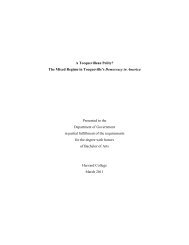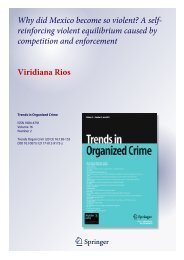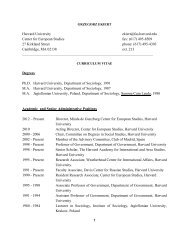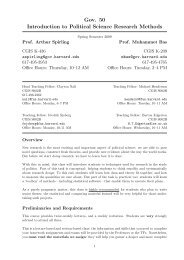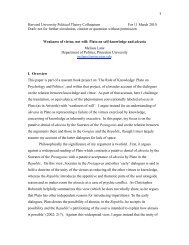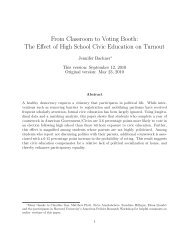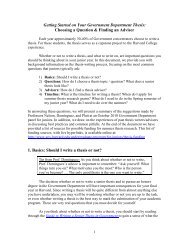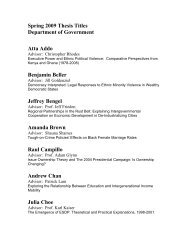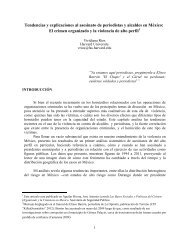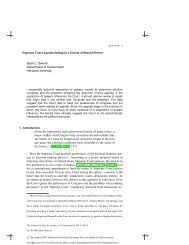Security issues and immigration flows: Drug-violence refugees, the ...
Security issues and immigration flows: Drug-violence refugees, the ...
Security issues and immigration flows: Drug-violence refugees, the ...
You also want an ePaper? Increase the reach of your titles
YUMPU automatically turns print PDFs into web optimized ePapers that Google loves.
“La Red” has almost 500 members, most of <strong>the</strong>m enrolling just recently (Martinez, 2011).<br />
The school system may also be changing in important ways. There is no way to officially<br />
count <strong>the</strong> exact numbers of students transferring from Mexican schools to El Paso<br />
Schooling District, but some numbers provide evidence of Mexicans increasingly studying<br />
at <strong>the</strong> US. The number of students enrolled in bilingual or limited English proficiency<br />
programs has increased by 1,330 students from 2007 to 2010 even as <strong>the</strong> total number of<br />
students enrolled at <strong>the</strong> school district has dropped from 45,049 in 2007 to 44,778 in 2010<br />
(Martinez <strong>and</strong> Torres, 2011; Torres, 2010a).<br />
These new Mexican immigrants are not only changing US border cities but also<br />
Mexican ones. Unoccupied dwellings in Mexican border cities are quite high <strong>and</strong> correlate<br />
strongly with <strong>the</strong> rates of drug-related homicides. According to census figures,<br />
26% of all dwellings in Juarez are unoccupied, 20% in Tijuana, <strong>and</strong> 19% in Mexicalli.<br />
O<strong>the</strong>r non-border cities facing drug-<strong>violence</strong> also have significantly low levels of occupancy:<br />
Chihuahua is 15% empty, <strong>and</strong> Monterrey, second most important city in Mexico,<br />
faces <strong>the</strong> same situation in 11% of its houses (Martinez et al, 2011) 9 . Some claim than<br />
forced migration has affected smaller, rural towns to <strong>the</strong> point of creating de facto ghost<br />
towns. Teachers, doctors, policemen, <strong>and</strong> public servers have left <strong>the</strong>ir communities without<br />
previous notice fearing <strong>violence</strong> episodes in communities of Tamaulipas, Michoacan,<br />
<strong>and</strong> Chihuahua.<br />
Ciudad Mier, a border county located south of Texas, is quite impressive case in<br />
this regard. My estimates account for a total displacement of about 430.91 individuals,<br />
something considerable given <strong>the</strong> city only counts with 6,662 inhabitants. Most of Mier<br />
migration happened in mid-2010 when Tony Tormenta, a Mexican drug-trafficker was assassinated<br />
(Corchado interviewed by Rios, 2010). Mier inhabitants, fearing <strong>violence</strong> <strong>and</strong><br />
retaliation from Tony Tormenta allies, left <strong>the</strong> city immediately, creating a true state of<br />
9 A poll conducted at Juarez showed that only 6.95% of all dwellings were empty, totaling about 32,858<br />
thous<strong>and</strong> residencies (Velazquez Vargas et al, 2010).<br />
18



